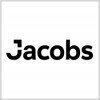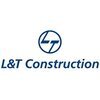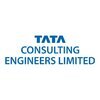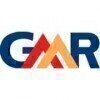Filter interviews by
Burns & McDonnell Interview Questions and Answers
Burns & McDonnell Interview Experiences
47 interviews found
I appeared for an interview in Jan 2025.
(2 Questions)
- Q1. Can we use 3 Phase autore closure at 400KV line and describe plus and cons
- Ans.
Yes, 3 Phase autoreclosure can be used at 400KV line with pros and cons.
Pros: Improved system reliability, reduced outage duration, automatic fault clearing
Cons: Increased wear on equipment, potential for re-ignition of faults, coordination challenges with other protection devices
- Q2. Why not using 1 phase AR in 132KV lines
- Ans.
1 phase AR is not used in 132KV lines due to limitations in fault detection and protection coordination.
1 phase AR lacks fault detection capabilities for all three phases
Coordination with other protection devices becomes difficult with 1 phase AR
Risk of incorrect tripping due to lack of complete system information
Potential for increased downtime and damage to equipment in case of faults
(2 Questions)
- Q1. Why dead time is 1 second
- Ans.
Dead time of 1 second is commonly used in protection systems to allow for accurate fault detection and coordination.
Dead time of 1 second is a standard value used in protection systems to account for relay operation time and communication delays.
It helps prevent false tripping by allowing for transient conditions to stabilize before initiating a trip.
For example, in a distance relay setting, a dead time of 1 second ens...
- Q2. Why reclaim time is 25 second
- Ans.
Reclaim time is 25 seconds to ensure proper coordination and selectivity of protection devices.
Reclaim time is set to allow downstream protective devices to clear faults before the upstream device operates.
It helps in preventing unnecessary tripping of healthy parts of the system.
The 25-second reclaim time is a standard value used in protection coordination studies.
Adjusting the reclaim time can impact the selectivity
Interview Preparation Tips
They are not able to judge the person rather weighing on what they know from their current assignment.
Poor philosophy by management.
HR is very arrogant and non responsive
They called at their office for personal interview, and promised to provide 2nd AC reimbursement, but not bother at all about reimbursement. Clearly loss of personal money (flight,hotel,etc).
Also started MS meeting at office,means at all any senior was their for face to face interview, only one guy of 8 year experience was there and rest 2 were on MST.
Very pathetic experience.
Not recommended to entertain such companies.
Wastage of time and money
Protection Engineer Interview Questions asked at other Companies
(3 Questions)
- Q1. Related work did
- Q2. Technical knowledge
- Q3. Software knowledge
(2 Questions)
- Q1. Salary expectation
- Q2. Notice period
I applied via LinkedIn and was interviewed in Jun 2024. There were 3 interview rounds.
(8 Questions)
- Q1. Can you tell me about yourself?
- Ans.
I am a dedicated and experienced Project Control Engineer with a strong background in managing project schedules, budgets, and resources.
Over 5 years of experience in project control and management
Proficient in using project management software such as Primavera P6 and Microsoft Project
Skilled in analyzing project data and providing accurate forecasts
Strong communication and teamwork skills, able to collaborate with cr...
- Q2. What are the basics of Primavera?
- Ans.
Primavera is a project management software used for planning, scheduling, and controlling projects.
Primavera is commonly used in industries such as construction, engineering, and manufacturing.
It allows users to create project schedules, allocate resources, track progress, and analyze project performance.
Users can generate reports, monitor costs, and manage risks within the software.
Primavera offers features like Gantt...
- Q3. What types of activities are there?
- Q4. What are the different types of relationships?
- Ans.
Different types of relationships include familial, romantic, professional, and platonic relationships.
Familial relationships: relationships between family members such as parents, siblings, and children.
Romantic relationships: intimate relationships between partners or spouses.
Professional relationships: relationships between colleagues or business partners.
Platonic relationships: non-romantic relationships based on fr
- Q5. How can you create a schedule?
- Ans.
A schedule can be created by identifying project tasks, estimating durations, sequencing tasks, assigning resources, and setting milestones.
Identify all project tasks and break them down into smaller, manageable activities.
Estimate the duration of each task based on historical data or expert judgment.
Sequence the tasks in the order they need to be completed, considering dependencies between tasks.
Assign resources to ea...
- Q6. What is a look-ahead report?
- Ans.
A look-ahead report is a document that outlines upcoming tasks, potential issues, and solutions for a project.
Provides a snapshot of upcoming project activities
Highlights potential roadblocks and proposed solutions
Helps project team anticipate and plan for future challenges
Usually covers a short-term period, such as the next week or month
- Q7. What are the steps to create a look-ahead report?
- Ans.
Steps to create a look-ahead report
Identify the project milestones and deadlines
Review the project schedule and identify upcoming tasks
Analyze potential risks and delays
Update the look-ahead report with current progress and forecasted completion dates
Communicate the report to stakeholders for awareness and decision-making
- Q8. What are the 14 points of the DCMA (Defense Contract Management Agency)?
- Ans.
The 14 points of the DCMA are guidelines for effective project management in defense contracts.
Establish clear project objectives and requirements
Develop a realistic project schedule
Assign responsibilities and authorities clearly
Ensure adequate resources are available
Maintain open communication with stakeholders
Identify and manage project risks
Monitor and control project performance
Implement corrective actions when nec...
(5 Questions)
- Q1. What is earned value management?
- Ans.
Earned value management is a project management technique for measuring project performance and progress.
Compares actual work completed and costs incurred to planned work and costs
Helps in forecasting project outcomes based on current performance
Key metrics include Planned Value (PV), Earned Value (EV), and Actual Cost (AC)
Formula: EV = % of work completed * Total budget
Example: If a project is 50% complete and the tot...
- Q2. What are the key performance indicators?
- Ans.
Key performance indicators are measurable values that demonstrate how effectively a company is achieving key business objectives.
KPIs are specific, quantifiable metrics used to track progress towards organizational goals.
They help in evaluating the success of a project or business by measuring performance in key areas.
Examples of KPIs for a Project Control Engineer may include project completion time, budget variance,
- Q3. A project scenario was provided, and I was required to identify the key performance indicators.
- Q4. What are the various formulas used to calculate the Budget at Completion (BAC)?
- Ans.
Formulas used to calculate Budget at Completion (BAC) in project control engineering.
BAC = Planned Value (PV) at completion
BAC = Actual Cost (AC) + Estimate to Complete (ETC)
BAC = Budgeted Cost of Work Scheduled (BCWS) + Budgeted Cost of Work Remaining (BCWR)
- Q5. Where do you see yourself in five years?
- Ans.
In five years, I see myself as a senior project control engineer leading a team of professionals and successfully managing complex projects.
Continuing to enhance my project management skills through advanced training and certifications
Taking on more responsibilities and leadership roles within the organization
Successfully completing several high-profile projects and delivering exceptional results
Mentoring and guiding j...
(2 Questions)
- Q1. What are your salary expectations for this position?
- Ans.
My salary expectations are in line with industry standards for a Project Control Engineer with my level of experience and qualifications.
Research industry standards for Project Control Engineer salaries
Consider my level of experience and qualifications
Be prepared to negotiate based on the overall compensation package offered
- Q2. What are the working hours that are suitable for you?
- Ans.
I am flexible with working hours and can adapt to the needs of the project. I am willing to work overtime when necessary.
I am open to working flexible hours to accommodate project needs
I am willing to work overtime when required to meet project deadlines
I can adjust my schedule to align with team meetings or client requirements
Interview Preparation Tips
Top Burns & McDonnell Project Control Engineer Interview Questions and Answers
Project Control Engineer Interview Questions asked at other Companies
I applied via Naukri.com and was interviewed in Jul 2024. There were 3 interview rounds.
Easy more quantitative type
Speak more and relevant to topic
(2 Questions)
- Q1. Related to your core subject
- Q2. Don't guess questions
Interview Preparation Tips
Trainee Interview Questions asked at other Companies
Burns & McDonnell interview questions for popular designations
The test is very difficult you have to complete all 20 questions which consist GC , subject related
(2 Questions)
- Q1. What is the wave trape?
- Ans.
A wave trap is a device used in electrical engineering to prevent unwanted signals or frequencies from entering a system.
Wave traps are typically used in power systems to filter out specific frequencies that can cause interference.
They are designed to allow only desired signals to pass through while blocking unwanted signals.
Wave traps can be used in substations, transmission lines, and other electrical systems to impr...
- Q2. Which types of circuit breaker use in substation
- Ans.
Types of circuit breakers used in substations include air circuit breakers, oil circuit breakers, vacuum circuit breakers, and SF6 circuit breakers.
Air circuit breakers are commonly used in low voltage applications.
Oil circuit breakers are used in high voltage applications.
Vacuum circuit breakers are compact and reliable, suitable for medium voltage applications.
SF6 circuit breakers are used in high voltage substations
Global warming ,covid-19, current affairs
Interview Preparation Tips
Electrical Engineer Interview Questions asked at other Companies
(2 Questions)
- Q1. Day to day work related questions
- Q2. Technical questions and problem analysis
Staff Engineer Interview Questions asked at other Companies
Jobs at Burns & McDonnell
(3 Questions)
- Q1. Different transformer protection
- Ans.
Different transformer protection methods include overcurrent protection, differential protection, and distance protection.
Overcurrent protection: Protects against overloads and short circuits by tripping the circuit breaker when current exceeds a certain threshold.
Differential protection: Compares the current entering and leaving the transformer to detect internal faults.
Distance protection: Uses impedance measurements...
- Q2. Variable frequency drive working
- Ans.
Variable frequency drive (VFD) controls the speed of an electric motor by varying the frequency and voltage of the power supplied to it.
VFDs are commonly used in industrial applications to control the speed of pumps, fans, compressors, and other motor-driven equipment.
They work by converting fixed frequency AC power to variable frequency AC power using semiconductor devices.
VFDs can improve energy efficiency, reduce we...
- Q3. Speed control of motor
- Ans.
Speed control of a motor is achieved by varying the voltage or frequency of the power supply.
Speed control can be achieved by adjusting the voltage supplied to the motor.
Alternatively, the frequency of the power supply can be varied to control the speed.
Using a variable frequency drive (VFD) allows for precise control of motor speed.
Feedback control systems can be implemented to maintain a constant speed under varying
Graduate Engineer Interview Questions asked at other Companies

(3 Questions)
- Q1. What is orifice std and types of taps
- Ans.
Orifice std refers to standard orifice sizes used in engineering. Types of taps include flange taps, corner taps, and D and D/2 taps.
Orifice std refers to standard sizes of orifices used in flow measurement
Types of taps include flange taps, corner taps, and D and D/2 taps
Flange taps are used for large pipes, corner taps for small pipes, and D and D/2 taps for general applications
- Q2. What is pressure gauge operating range
- Ans.
Pressure gauge operating range refers to the minimum and maximum pressure values that the gauge can accurately measure.
Pressure gauge operating range is typically specified by the manufacturer.
It is important to ensure that the pressure being measured falls within the gauge's operating range to ensure accurate readings.
For example, a pressure gauge with an operating range of 0-100 psi should not be used to measure pres
- Q3. What is straight length requirements for orifice flow element
- Ans.
Straight length requirements for orifice flow element ensure accurate measurement by allowing flow to stabilize before reaching the element.
Straight length requirements typically range from 10 to 44 pipe diameters upstream and 5 to 22 pipe diameters downstream of the orifice.
These requirements help prevent flow disturbances and ensure accurate measurement of flow rate.
For example, if the pipe diameter is 4 inches, the ...
(3 Questions)
- Q1. Salary expectations and current ctc
- Q2. Describe about yourself and other information
- Q3. Why we should hire you and other similar questions.
Interview Preparation Tips
Design Engineer Interview Questions asked at other Companies
I applied via Campus Placement and was interviewed before Jul 2023. There were 2 interview rounds.
The very first round was Online Assessment( Aptitude+Technical - MCQs).
(2 Questions)
- Q1. Questions on Relays, Transformer losses
- Q2. Situation question on leadership
Interview Preparation Tips
- Basic Electrical
- Power Systems
- Power System Protection
• Brush up on basics concepts which is more than enough
Graduate Engineer Trainee (Get) Interview Questions asked at other Companies
I applied via Campus Placement and was interviewed before Jun 2023. There were 2 interview rounds.
(2 Questions)
- Q1. Stress strain diagram of the beam
- Ans.
Stress strain diagram shows the relationship between stress and strain in a material.
The stress strain diagram typically consists of a linear elastic region, a yield point, plastic deformation, and ultimate failure.
The slope of the linear elastic region represents the material's modulus of elasticity.
The yield point indicates the point at which the material begins to deform plastically.
The area under the stress strain ...
- Q2. Which is code iss used for rcc
- Ans.
IS 456 is the code used for RCC (Reinforced Cement Concrete) in India.
IS 456 is the Indian Standard code for the design and construction of reinforced concrete structures.
It provides guidelines for the selection of materials, mix design, construction practices, and quality control.
For example, IS 456 specifies the minimum grade of concrete, minimum cover to reinforcement, and detailing requirements for RCC structures.
(2 Questions)
- Q1. Design steps of foundation
- Ans.
Design steps of foundation involve site investigation, soil testing, foundation type selection, structural design, and construction.
Site investigation to assess soil conditions and load-bearing capacity
Soil testing to determine soil properties and behavior under load
Selection of appropriate foundation type based on soil conditions and structural requirements (e.g. shallow foundation, deep foundation)
Structural design o...
- Q2. Design steps of the slab
- Ans.
Design steps of the slab involve determining the type of slab, calculating loads, selecting materials, and detailing reinforcement.
Determine the type of slab based on the structural requirements and architectural design.
Calculate the loads that the slab will be subjected to, including dead loads, live loads, and other imposed loads.
Select appropriate materials for the slab, considering factors such as strength, durabil...
Interview Preparation Tips
Civil Graduate Engineer Trainee Interview Questions asked at other Companies
Burns & McDonnell Interview FAQs
Some of the top questions asked at the Burns & McDonnell interview -
The duration of Burns & McDonnell interview process can vary, but typically it takes about less than 2 weeks to complete.
Tell us how to improve this page.
Burns & McDonnell Interviews By Designations
- Burns & McDonnell Electrical Engineer Interview Questions
- Burns & McDonnell Structural Engineer Interview Questions
- Burns & McDonnell Instrument Engineer Interview Questions
- Burns & McDonnell Piping Engineer Interview Questions
- Burns & McDonnell Data Analyst Interview Questions
- Burns & McDonnell Graduate Engineer Trainee (Get) Interview Questions
- Burns & McDonnell Electrical Design Engineer Interview Questions
- Burns & McDonnell Analyst Interview Questions
- Show more
Interview Questions for Popular Designations
- Executive Interview Questions
- Analyst Interview Questions
- Senior Associate Interview Questions
- Business Analyst Interview Questions
- Senior Engineer Interview Questions
- Sales Executive Interview Questions
- Graduate Engineer Trainee (Get) Interview Questions
- Senior Software Engineer Interview Questions
- Show more
Burns & McDonnell Interview Process
based on 45 interviews
Interview experience
Interview Questions from Similar Companies
Fast track your campus placements
Burns & McDonnell Reviews and Ratings
based on 307 reviews
Rating in categories
|
Electrical Engineer
89
salaries
| ₹4.5 L/yr - ₹10.1 L/yr |
|
Senior Associate Engineer
51
salaries
| ₹7.5 L/yr - ₹12 L/yr |
|
Electrical Designer
50
salaries
| ₹4.8 L/yr - ₹12 L/yr |
|
Project Control Engineer
50
salaries
| ₹5.5 L/yr - ₹10 L/yr |
|
Senior Associate Electrical Engineer
36
salaries
| ₹6.3 L/yr - ₹12.8 L/yr |

Black & Veatch

AECOM

Jacobs Engineering Group

Fluor Corporation
- Home >
- Interviews >
- Burns & McDonnell Interview Questions






















